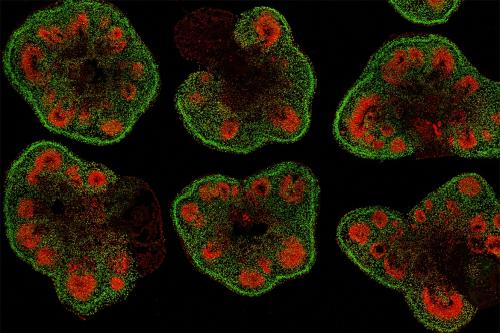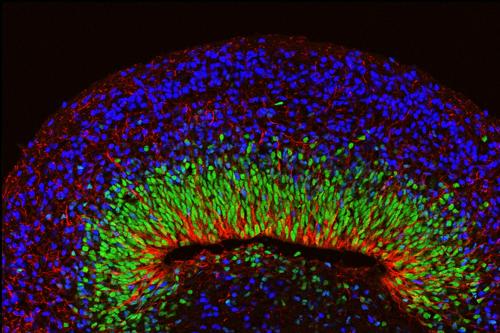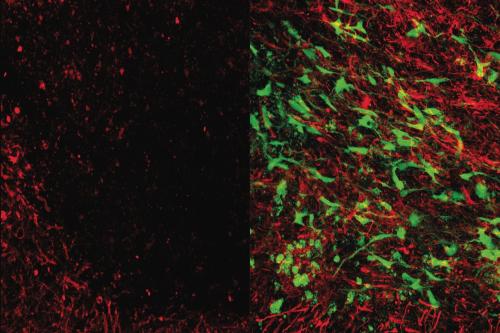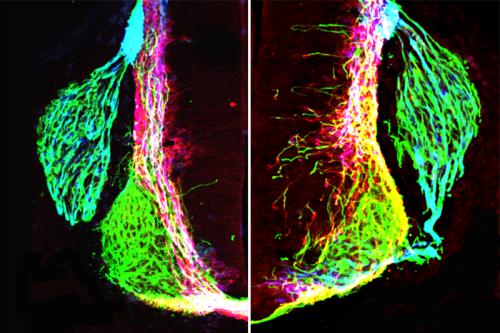
Glossary
Neural Stem Cells
A type of tissue-specific stem cells Mature stem cells that are found in many adult organs and tissues (such as the brain and muscles). Unlike pluripotent stem cells, they can only produce the cell types found in the organ or tissue they inhabit. They're responsible for replacing cells that have been lost due to natural wear and tear, injury and illness throughout life; however, their ability to do so decreases with age. tissue-specific stem cells Mature stem cells that are found in many adult organs and tissues (such as the brain and muscles). Unlike pluripotent stem cells, they can only produce the cell types found in the organ or tissue they inhabit. They're responsible for replacing cells that have been lost due to natural wear and tear, injury and illness throughout life; however, their ability to do so decreases with age. found in the brain and spinal cord. These cells play a crucial role in the development, maintenance and repair of the brain and nervous system throughout a person's life.
The brain is among the many organs in the human body that contain functional stem cells Cells that have the ability to differentiate into multiple types of cells and make an unlimited number of copies of themselves. stem cells Cells that have the ability to differentiate into multiple types of cells and make an unlimited number of copies of themselves. throughout life. The discovery of neural stem cells has led center scientists to deepen their understanding of how the activity of these cells can be harnessed and to examine whether neural cells produced from human embryonic stem cells Pluripotent stem cells that give rise to every cell type in the adult body. They are derived from the inner cell mass of a blastocyst. embryonic stem cells Pluripotent stem cells that give rise to every cell type in the adult body. They are derived from the inner cell mass of a blastocyst., or hESCs, and induced pluripotent stem cells iPS cells are cells taken from a patient that are reprogrammed so that they can undergo differentiation into any type of cell in the body. By maintaining the genetic code of the patient, iPS cells play a crucial role in disease modeling and regenerative medicine. induced pluripotent stem cells iPS cells are cells taken from a patient that are reprogrammed so that they can undergo differentiation into any type of cell in the body. By maintaining the genetic code of the patient, iPS cells play a crucial role in disease modeling and regenerative medicine., or iPSC, may be used to replace or regenerate damaged or diseased neural tissue. Our active research agenda may one day lead to treatments for neurodegenerative and neuromuscular diseases as well as nerve related injuries and stroke.
Demystifying human brain development
Our members aim to understand the developmental mechanisms that build the neural circuits in the brain that enable cognitive functions such as learning and memory, as well as motor circuits in the brainstem and spinal cord that enable us to breathe, stand, move and interact with the world. The relative inaccessibility of the human nervous system has long stood as a major roadblock towards studying the basis of many neurological diseases and in developing effective drugs to combat these disorders. Using human stem cells, we seek to overcome these barriers by creating novel cell culture-based models to explore disease mechanisms and serve as a platform for drug discovery.
Neural stem cell repair
Faculty are also focused on the process by which stem cells produce new neurons in the adult brain. Enhancing the generation of new neurons may aid in the treatment of Alzheimer’s or Parkinson's disease. Studies of this process may also lead to a better understanding of the origins of brain tumors, which may result from adult neural stem cells that have gone awry. Finally, faculty are conducting basic research Aims to improve scientific theories for a better understanding and prediction of natural phenomena. Discoveries made through basic research can advance our understanding of processes that underlie the development and function of living organisms. Better understanding of how things work sometimes leads to breakthroughs in disease research and treatment. basic research Aims to improve scientific theories for a better understanding and prediction of natural phenomena. Discoveries made through basic research can advance our understanding of processes that underlie the development and function of living organisms. Better understanding of how things work sometimes leads to breakthroughs in disease research and treatment. and translational/preclinical studies that may enable the transplantation of stem cells into brain tissue damaged by stroke in order to regenerate healthy tissue and hopefully regain lost function.
Utilizing induced pluripotent stem cells to study complex diseases
Center researchers were the first to show that induced pluripotent stem cells can be differentiated into electrically active motor neurons, a discovery that may aid in studying and treating neurological disorders, such as ALS (Lou Gehrig’s Disease), as well as spinal cord injuries through the use of a patient’s own cells. Our members are currently partnering with UCLA clinical departments in order to obtain skin cells from patients with various currently untreatable neurologic diseases including ALS, Rett syndrome, Lesch-Nyhan syndrome and Duchenne muscular dystrophy in the hopes of using iPSC technology to produce a limitless source of human cells harboring disease-causing mutations that will advance our understanding of these disorders and potentially lead to the development of effective treatments.


